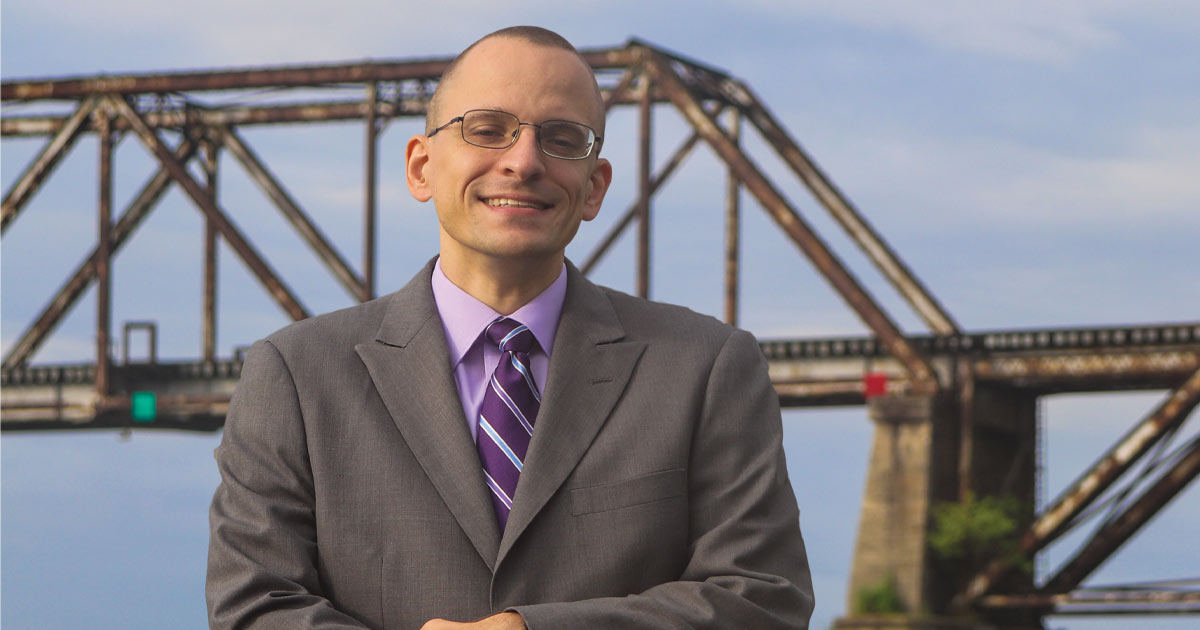Looking Small to Solve Bigger Issues
From a paper clip to a jumbo jet, if you use something enough times, it will eventually wear down to the point of failure. Such breakdowns are often caused by what is known as fatigue cracking.
Those cracks start small, but forces ranging from weather to changing weight loads can add to stresses that begin to break the materials further apart.
Gaining an understanding of how these stresses play out at the smallest level may help researchers develop better materials by being able to predict where such stresses are likely to occur.
Assistant Professor of Civil and Environmental Engineering Timothy Truster is playing a leading role in that undertaking by using the novel approach of applying computational methods to crack the code on material interactions at those granular levels.
With almost no limit to the number of things impacted by such destructive forces, both materials science and civil engineering have made it a major area of research.
Truster identified distribution as a key area of concern early on, leading him to try to develop his new approach, the first in the field to use computing in such a way.
The ways loads distribute between regions within the microstructure were not fully understood. “Gaining a knowledge of those correlations will allow us to come up with specifically tailored material design.”
By using advanced mathematics to study zones of influence within materials at both large and small scales, he hopes to gain insight into why some flaws within objects lead to cracking while others do not.
That, in turn, holds tremendous potential for developing more reliable materials to be used in everything from energy production to the defense industry.
While Truster has made a career out of cracking the code of where such failures occur, the National Science Foundation recently backed his work with a prestigious Early CAREER award.
“This [award] is a great honor, and I’m happy that it reflects well on the work that my students and I have been doing,” Truster said. “I am encouraged that others see the need for studying fatigue behavior and developing new methods to help design better materials.”
Part of the CAREER program is making sure awarded projects include an outreach program.
To that end, Truster plans on introducing high school juniors and seniors to an enhanced curriculum based on simplifying physics, helping better prepare them for college and beyond.
